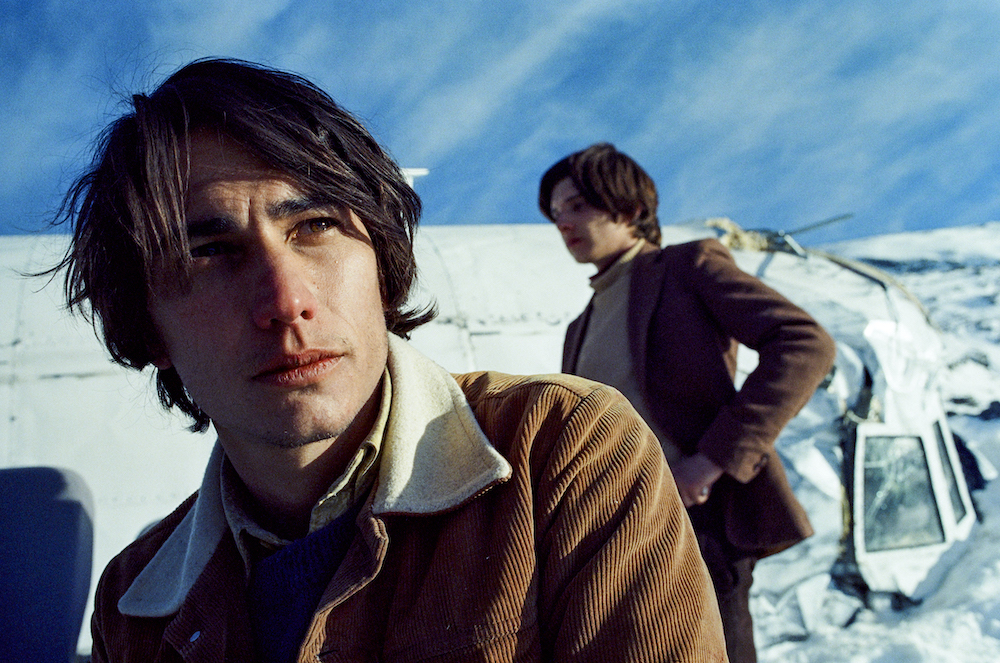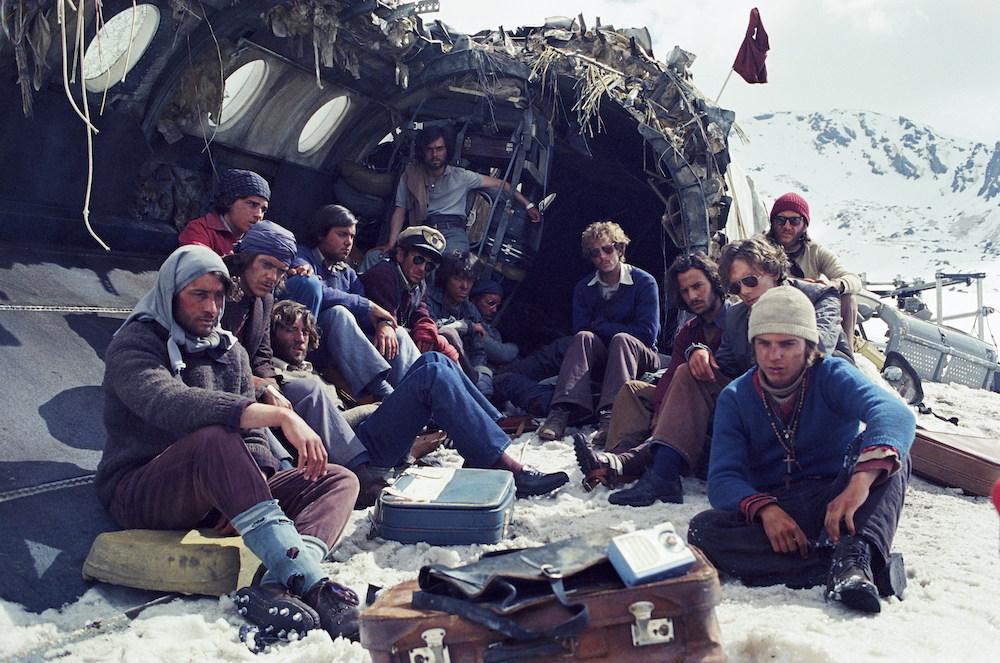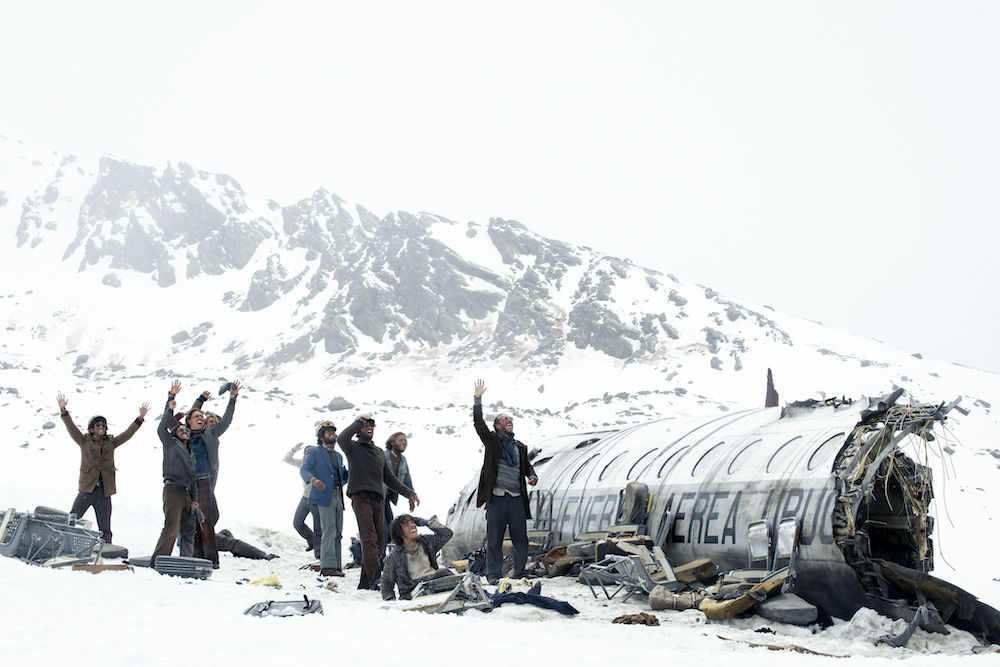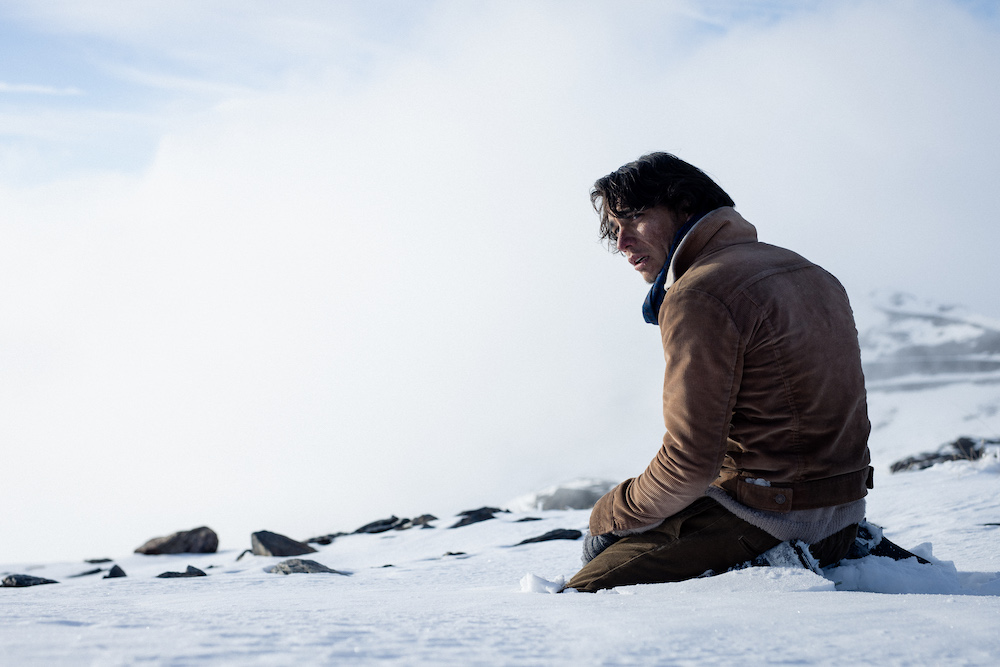In Netflix’s ‘Society of the Snow,’ we follow the incredible story of survival and resilience in the face of unimaginable circumstances. It begins with a plane crash that strands the passengers, most of whom are in their early 20s or younger, in the cold and harsh environs of the Andes. They are trapped at the crash site as the weather doesn’t allow them to travel very far, with the mountains offering a challenge of their own. They have to do whatever it takes to survive. Through the film, the audience gets to the heart of the story, and the title aptly prepares them for what happens in the movie. SPOILERS AHEAD
The Title Emphasises the Core Theme of the Film

Having seen so many survival movies and TV shows, one common theme in the genre is how easily the facade of structure and control crumbles in the face of adversity. We often find characters fighting amongst themselves, hungry for power (apart from food), and what might have started as “man vs nature” soon becomes “man vs man.” People divide themselves into groups, with one party being the good guys who stand for moral values, while the other section becomes the bad guys, or worse, villains, who have let go of their moral and human values. Society crumbles in these scenarios, and it falls upon the “heroes” to save it.
Another common ground between such stories is that most of them are fictional, often created by people who have never really been in those situations. In that case, the characters and their actions are imaginary or an extrapolation of something that might have happened. But the fact remains, you don’t know what you would really do if you were in that situation. You’d think you know, you might tell yourself you’d never do what you saw the characters do on the screen, that if you were ever in that situation, you’d be one of the good guys. But, in truth, you wouldn’t know until you were actually in that situation. Until then, all your thoughts are just speculations.
In ‘Society of the Snow,’ all the imagination, extrapolations, and speculations are thrown out of the window because what happens with the characters and what the audience sees on the screen is what really happened, and it mostly happened exactly the way the film shows it. And this is what makes the story so remarkably unbelievable because even with cannibalism, the story remains purely human and much more compassionate than any imaginary story.

When Flight 571 crashed in the Andes, and the passengers had barely any food and no hope of rescue, the dejection and hopelessness didn’t turn them against each other. It didn’t make them fight for whatever food they had; it didn’t make them go “every man for himself.” It didn’t make them abandon the injured or be disrespectful of the dead. It didn’t bring out the worst in any of them. On the contrary, it brought out the best in them.
The title of the Netflix film comes from the book of the same name by Pablo Vierci, who named it ‘Society of the Snow’ because that’s what the survivors called themselves. They lived without any contact with the rest of the world for 72 days, forced to fend for themselves by whatever means possible. Within days, they knew that no help was coming, that if they were to be rescued, they’d have to do it themselves, while also knowing that they had no way of walking all the way down the mountains, not even knowing where they were and how far from civilization.
This would have been enough to break a person, but the survivors, whose numbers dwindled with every passing day, held fast to each other and made their own society and their own rules because that’s what it took for them to survive. Soon after the crash, they collected everything edible from the wreckage and put it in one place. Everyone knew where the food was, but no one touched it, stole it, or claimed it. The food, minuscule as it was, was distributed to everyone equally. It belonged to none of them and all of them. It was survival for them all or none of them at all. Every person’s actions and decisions affected the survival of the rest, and that’s what truly bonded them.
Surviving in one of the most uninhabitable places on Earth required them to rewrite their own moral and social codes. When the food had run out, and they faced death by starvation, they mutually agreed to eat the dead. This decision wasn’t borne just out of desperation. They had discussions about the idea and the act itself, and above all, the question of consent. The dead were just as important as the ones still breathing, and it was this concern for the group as a whole that gave meaning to their survival.

Before they started eating the dead, they gave their own consent to be eaten should they die and the others need them to survive. This made their actions more than just a brute act of cannibalism. It was more about ensuring each other’s survival, to give themselves up to make sure that those left behind could survive further. It was an act of sacrifice but also of love and hope for their friends.
In the spirit of “all for one and one for all,” every passenger on that plane was part of the story. The survivors, even those who made it to the end, didn’t consider themselves the heroes. When it came to telling the story to the world, they called their dead friends heroes instead of themselves. Director J.A. Bayona took this spirit to the making of the film and made sure that the narrative wasn’t focused on a single person. He didn’t want to highlight just the stories of those who had survived but also of the people who didn’t. He also didn’t want any judgment upon them to come from the outside, from the society they briefly didn’t belong to.
This was one of the reasons why he chose Numa as the narrator of the story, which gives the film more gravity from a creative standpoint because with Numa being the narrator, the audience has an “in” into the story. This story is being told to them by someone who was there and suffered through it. This creates a bridge between the survivors and the audience, who aren’t mere spectators of an incident now but are conscious not just of the characters’ actions but also of the fact that this story cannot be judged by the normal rules of their society. It can only be understood if you see things from the lens of the Society of the Snow.
Read More: Society of the Snow Timeline, Explained


You must be logged in to post a comment.